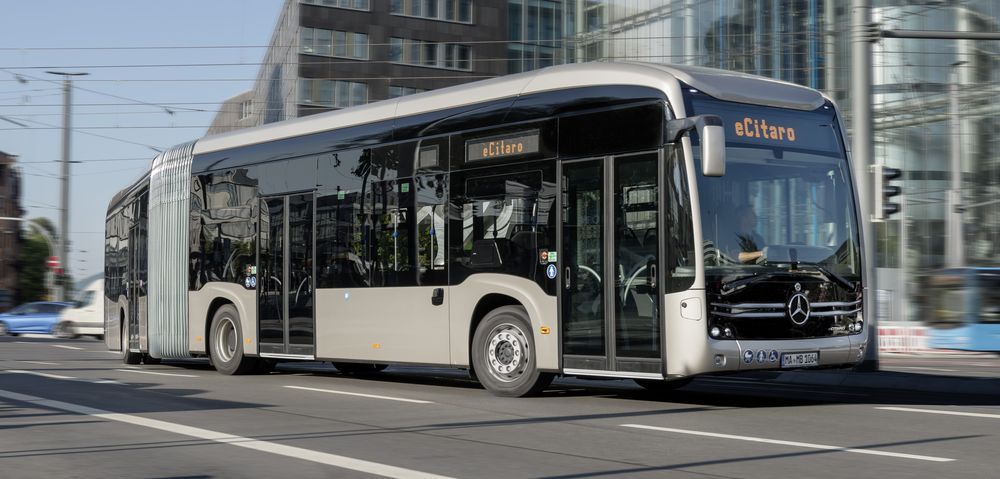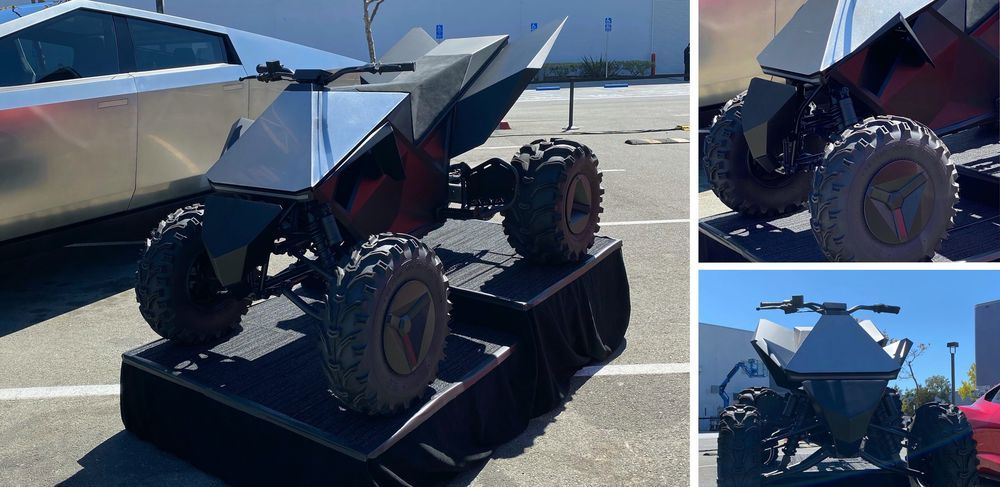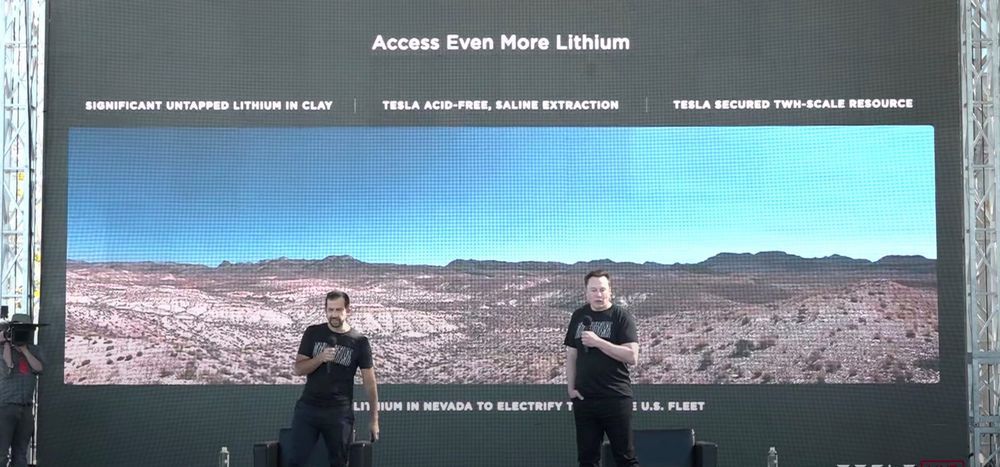Researchers at Berkeley Lab in California have developed a new material that can close the loop on recycling plastics, keeping it out of the ocean and landfills.



The Navy has fielded a 650-round ammo backpack nicknamed ‘Avenger’ to troops at some point in the last two years.
Daimler has unveiled an electric bus equipped with a solid-state battery pack — probably becoming the first planned production EV with a solid-state battery.
The German automaker has been aggressively electrifying its deep lineup of big vehicles from buses to commercial trucks.
This week, Daimler unveiled an update to its eCitaro, the electric version of its best-selling Citaro electric city bus, and the update included the anticipated solid-state version of the bus: the eCitaro G.

Tesla’s Cyberquad electric ATV prototype had its first public outing this week since the unveiling last year, and here we bring you a closer look with a gallery of pictures.
When Tesla unveiled the Cybertruck last year, CEO Elon Musk had a little “one more thing” moment on stage when they brought the Tesla Cyberquad, an electric ATV, to show the loading capacity of Cybertruck’s bed.
At the time, it wasn’t clear whether Tesla planned on making the electric ATV available, but Musk later confirmed that it will be an option for Cybertruck buyers.

Tesla is now officially getting into the mining business with a lithium claim on 10,000 acres in Nevada.
At the Battery Day event yesterday, as part of its entire new battery supply strategy, Tesla announced that it is developing its own lithium processing method.
Drew Baglino, SVP of engineering at Tesla, said:
Karen Potter, Director of Sustainability Hub and ideaXme sustainability ambassador interviews Christoph Promberger, M.Sc., Executive Director Foundation Conservation Carpathia (FCC). https://www.carpathia.org
Karen Potter comments:
In 2009, the Foundation Conservation Carpathia was founded by a dozen international philanthropists and conservationists with the goal to stop illegal logging and to protect a significant surface of Carpathian forests to form a completely protected area.
The FCC was founded in response to the restitution of formerly nationalised forests to private citizens in Romania. This process triggered massive clear-cuts and thousands of hectares of forests were illegally logged, posing a severe threat to the integrity of the Carpathian ecosystem.
Wilderness is disappearing globally at an alarming rate, less than 2% of Europe’s surface is still in its original state and the Carpathian Mountains form some of the largest contiguous forests on the continent with the highest percentage of still virgin woodlands; they contain an extraordinarily high number of species.
Karen is a passionate environment and sustainability campaigner leading Government and Parliamentary efforts to promote Net Zero policy solutions as well as lead on COP26, business, community and civic action. She is a project development specialist with extensive experience in designing and delivering new initiatives to promote sustainability, social responsibility, smart energy, the Green Recovery and clean tech investment. She is highly experienced in government, NGO and public sector communications, building and managing senior stakeholder relations and media engagement.

Introduction: In recent years a futurist aesthetic movement has emerged in response to renewed public concern for the environment and a seeming lack of reflection of that concern in much contemporary art and design. Deriving its name from similar aesthetic movements such as Cyberpunk and Steampunk, its roots lay in various eco/climate science fiction and Post-Industrial futurist literature and is considered ‘punk’ in the sense that it is reactionary, and in opposition, to both the naive corporate utopianism that dominated the 20th century and the dystopianism that emerged in its wake by the end of that century, persisting to the present. We now live in an era where pragmatism is a radical stance. Thus Solarpunk seeks to cultivate a positive, hopeful, vision of a future rooted in technologies and culture of sustainability, yet in the context of what it acknowledges will be dramatic changes in our way of life due to Global Warming and the environmental malfeasance of the past, the transition to a renewables-based infrastructure, and the collapse of Industrial Age paradigms. A culture that has weathered the dramatic disruptions coming with the end of the Industrial Age, taken its sometimes bitter lessons from that, and found a way forward.
What makes Solarpunk ‘punk’ is an underlying activist/revolutionary narrative it shares with the earlier punk movements tracing its origins to the narrative of one of Science Fiction’s earliest ‘antiheroes’; Captain Nemo of Jules Verne’s 20,000 Leagues Under The Sea. Long mischaracterized in film, the original character of Nemo is an Indian victim of European colonialism who is radicalized by the murder of his family by colonialists. He then appropriates and improves upon the technology of the colonialist powers not just to fight against them but to create a model egalitarian society of the future in the secret haven of the underwater underworld, beyond the reach of those colonial powers. Thus he becomes the prototype tech-hero, turning the oppressors/dominators technology against them and repurposing it for the benefit of the rest of society.
You might never have to replace your tires again.
When all-electric vehicles eventually complete their global takeover, they’ll collectively require much less maintenance than their oiled up, transmission-based counterparts. As for the tires? That’s a different story.
To help drivers avoid the misery of waiting around for a tire change, Goodyear has introduced an intriguing new concept: tires that can regenerate new tread on the spot.

Launching soon on Kickstarter.
Wake up and smell the coffee: introducing™ 3-in-1 jacket — an inner & outer jacket which are high-performing, sustainable, and versatile.
We have been manufacturing jackets for the market leaders for years. It is now our turn to use what we have learned to create the highest-quality jacket and cut out the middleman saving you money.
